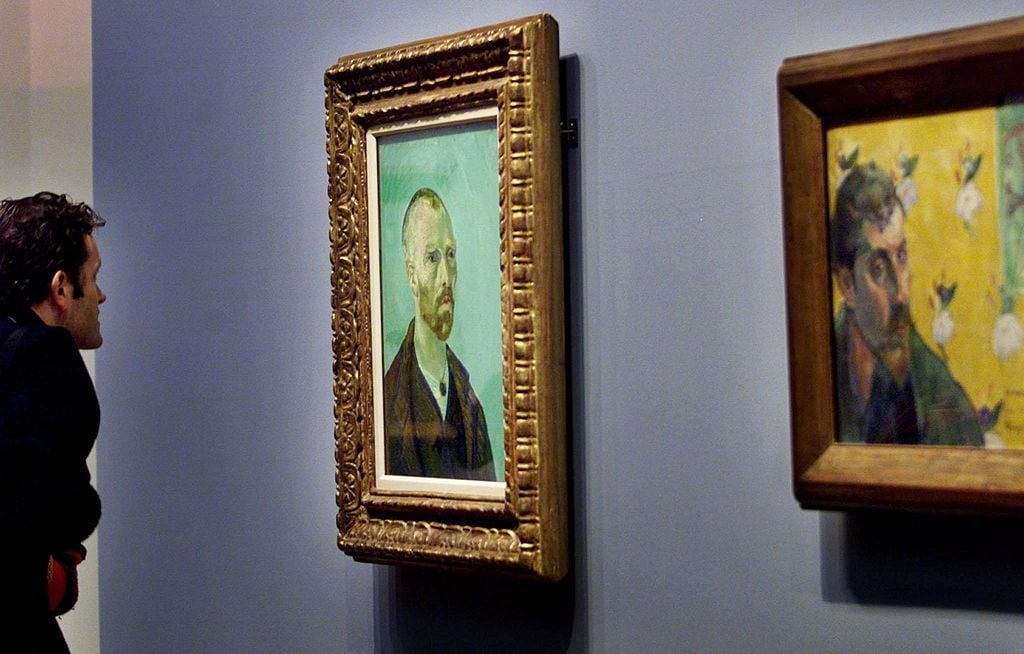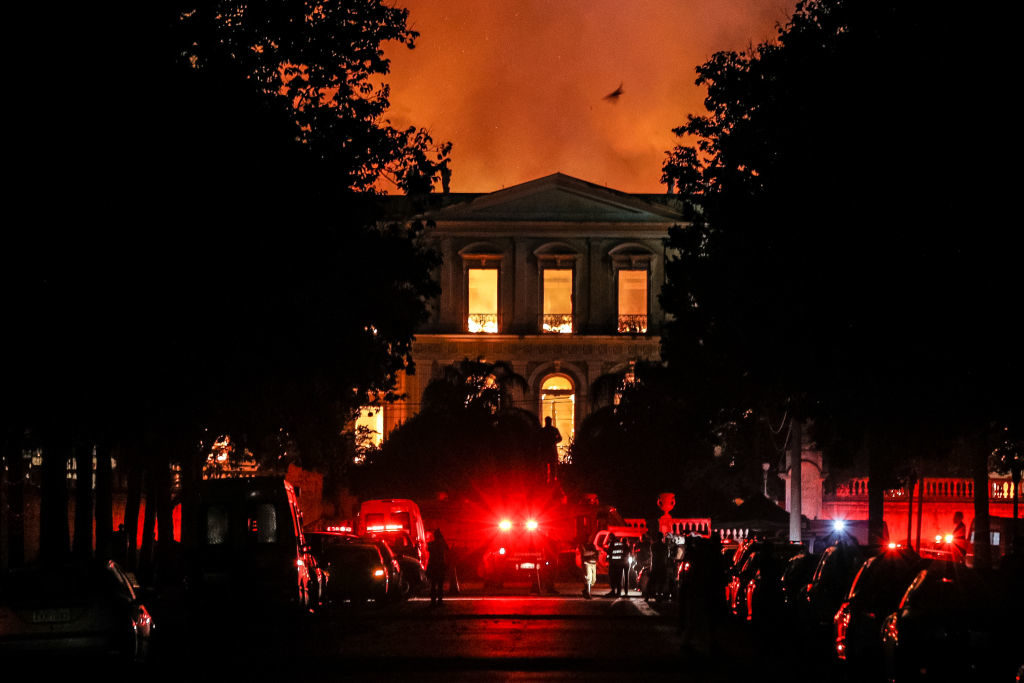Every Monday morning, artnet News brings you The Gray Market. The column decodes important stories from the previous week—and offers unparalleled insight into the inner workings of the art industry in the process.
This week, stories about values in the arts that are low on visibility but high on impact…
PROFIT PERSPECTIVE
On Wednesday, the US Attorney’s Office for the Southern District of New York announced that veteran Chelsea gallerist Mary Boone had pleaded guilty to two counts of tax evasion stemming from federal returns for 2011. Boone is scheduled for sentencing in January and faces up to three years in prison. My colleague Eileen Kinsella also notes that Boone “has agreed to pay restitution to the IRS of just over $3 million, which the US Attorney’s office said represents the additional taxes due for returns filed in 2009, 2010, and 2011.”
For a host of reasons, I’m not going to comment on Boone’s fate or how she reached this stage. What I want to address instead is a gallery sector rarity revealed in the court proceedings. According to the prosecutor’s office, Boone’s gallery claimed a small net loss of just over $52,000 while accounting skulduggery hid that the company “made a profit of approximately $3.7 million” in 2011.
This is noteworthy because we rarely ever learn how much actual profit a successful commercial gallery makes. Sure, we’ve all heard the Wall Street Journal’s estimate that Gagosian generates $1 billion in annual sales. But there is no indication of where that number was sourced, and annual sales revenue tells us nothing in the absence of the gallery’s annual expenses. The US Attorney’s office, on the other hand, confirmed what Boone’s gallery took home in 2011 when all the math was done.
For a sense of scale, what does a company that generates $3.7 million in annual business look like outside the art world? I did some googling, and it turns out that Boone’s 2011 net profit was modestly above a good year for Maryland construction company Therrien Waddell, which generates up to $3 million in annual profits “grinding out friendly storefronts, those anonymous data centers, and even swimming pools.” So apparently, moving high-value artwork through two sleek Chelsea spaces propels a gallery to about the same financial scale as blessing the east coast with server farms and Panera Bread franchises.
If you’re wondering why this amounts to anything more than a fun cocktail-party factoid, ask yourself this: How many galleries around the globe sell as well or better than Mary Boone? Certainly under 100. Probably under 50, I’d guess.
Which means netting $3.7 million after nearly 40 years at the top of the business (Boone opened in 1977) in a year when the art market had rounded into a post-recession recovery borders on a best-case scenario for art dealing. And given the dozens of small- and modestly sized galleries that have shut down in the past few years, it’s safe to say that the average dealer is a lot closer to netting nothing than being Boone.
I’d guess everyone outside of the IRS will still be groping their way around in the dark about gallery finances in another 40 years. After all, as Marc Spiegler told me last week, Art Basel didn’t even feel it could get profit/loss numbers from its exhibitors for the sake of crafting fairer booth fees. But whether we’re talking about art-fair expenses, artist-representation terms, or gallery-staff benefits, Boone’s 2011 profit should remind us that the vast majority of gallerists are closer to buying themselves lunch from their local Panera than sniffing the same scale as the firm that built the franchise.
[artnet News]

A journalist looks at a self portrait of Vincent van Gogh at the Van Gogh Museum in Amsterdam, 07 February 2002. Photo: Charlotte Dirkse/AFP/Getty Images.
RETAIL THERAPY
On Monday, Forbes reported that Amsterdam’s Van Gogh Museum will stage a roughly yearlong series of pop-up exhibitions in seven American shopping malls. Produced by “full-service pop-up and retail agency” Retail Is Detail, the show will feature high-quality 3-D printed editions of nine Van Gogh paintings (properly labeled as Van Gogh Museum Editions). The tour begins next month at Pennsylvania’s posh King of Prussia Mall and is currently scheduled to end in Los Angeles’s Beverly Center in November 2019.
Now, the reasons for using replicas on the tour are obvious. It’s not as if any museum should ever be expected to slam original masterpieces into a kiosk next to the Sunglass Hut. As for the “why” of the larger enterprise, Retail Is Detail executive director Josh Blogg highlighted two motivations to Forbes.
The first is to aid the museum in its “mission to make the life and work of Vincent van Gogh and his contemporaries accessible to as many people as possible,” particularly those who may not visit art institutions or be inclined or able to travel to Amsterdam. The second is to raise “significant additional funding on a global scale for the museum and its unique collection.”
The pop-ups will pursue that second goal through multiple channels. At the King of Prussia Mall, entry to the exhibition will cost five dollars. (No word yet on admission fees at the other tour stops.) The pop-ups will also offer merchandise for sale, headlined by editions of the same 3-D printed replicas that form the basis of the show.
What neither Forbes nor the museum’s website mentions, however, is the cost of those 3-D prints. Back when they debuted in 2013, the Guardian reported they were priced at £22,000 each. However, a Van Gogh Museum spokesperson confirmed that today the prices have dropped to $17,750 each, including transport costs but not import duties.
Will a healthy number of American mall-goers buy them at that lofty price? When a museum official was asked that same question five years ago, he expressed optimism because of sales made on site when the Museum Editions were launched in China—not coincidentally, in a mall.
Color me skeptical. Different cultures have different attitudes about art and business. It seems like the proliferation of “art malls” in Asia suggests Eastern buyers are primed for the synergy of cultural treasures and everyday retail to an extent the US isn’t yet familiar with. Even though the malls on the tour are high-end affairs, I’d be surprised if a healthy number of American shoppers head out for a $175 jacket and find themselves coming back home with a $17,750 Van Gogh replica.
That doesn’t mean the pop-up tour will fail, or even that the overall strategy is bad. It could still pay off from admission fees and sales of lower-priced merch. But the museum’s US mall tour could also create a very small-scale experiment that tells us something meaningful about how different American and East Asian audiences are—or aren’t—in this era. And that’s worth watching.
[Forbes]

A fire burns at the National Museum of Brazil, Rio de Janeiro. Photo by Buda Mendes/Getty Images.
BURN NOTICE
Finally this week, Brazil’s 200-year-old National Museum went up in flames last Sunday, with officials estimating that up to 90 percent of the collection may have been damaged or destroyed. For a more specific sense of the tragedy, my colleague Henri Neuendorf compiled a listicle of some of the specific cultural treasures feared to be lost.
But while Brazilian politicians and select National Museum officials blamed the fire on the country’s recession, austerity measures, and underfunding of public institutions, Hugh Eakin in the Washington Post reminded us that natural disasters are just as much a threat to museums in rich countries as struggling ones.
Eakin references multiple events to make his point, including the complete destruction by fire of the Aberdeen Museum of History outside Seattle this June, the 1958 blaze in the Museum of Modern Art that, among other damage, devoured “one of Claude Monet’s largest Water Lilies paintings,” and a 2013 flood in Rotterdam’s Museum Boijmans Van Beuningen that nearly forced the director to choose between containing the waters in the paintings galleries or the archives of historic books. (An eleventh-hour water pump revival prevented calamity.)
Not surprisingly, the American museums that Eakin singles out as some of the best prepared for natural disasters today, such as the $422 million Whitney Museum of American Art and the shining, hyper-secure cloud-city that is the Getty, are distinguished by their flush founders and donors. But as my colleague Julia Halperin covered last year, even institutions with enviable funding increasingly have to navigate a similar obstacle course of politics and economics as cash-strapped ones.
Why? Because natural disasters are becoming greater and greater threats due to climate change, and climate change is becoming more and more a matter of partisan opinion than scientific fact. (After all, we now have a sitting President who declared, “The concept of global warming was created by and for the Chinese in order to make US manufacturing non-competitive.”)
In that sense, the values that matter most in preparing a museum for fires, floods, and 100-year storms aren’t just the totals in its bank account. They are also the political values held by its most influential board members and constituents. And in this era of societal volatility, that makes almost every public collection more vulnerable than it should be.
[The Washington Post | artnet News]
That’s all for this edition. ‘Til next time, remember: Just because it’s out of sight doesn’t mean it should be out of mind.











